Collector Robert Buford: Embracing the Connectivity of Art

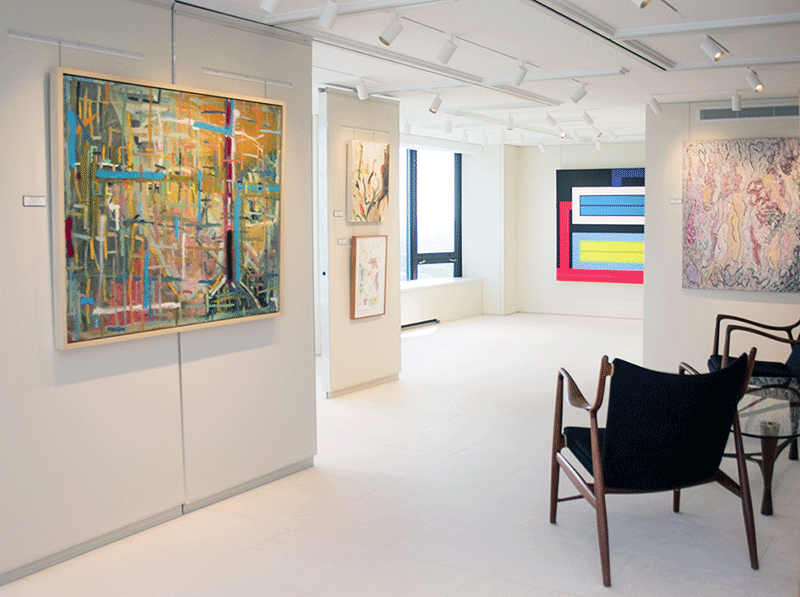
By GINNY VAN ALYEA
When I took the elevator to collector Bob Buford’s apartment, I thought it was to the top of the building, since that’s where the floor numbers stopped. I soon learned that a series of opportunities over nearly ten years gave Mr. Buford access to several units above as well as next to the main one, ultimately creating a four story home in the sky, with 360° views of Chicago and Lake Michigan.
Housed throughout this spacious urban refuge is a top tier art collection. After my arrival, I expected to start talking about how Bob first became interested in art and when he began to actively collect it, but as we walked through the apartment, passing dozens of paintings, through a library, by a wine cellar, into an office, we were distracted by what could be described as a “Lollapalooza Study Center.” The four-day music festival had just ended a few days prior, and Bob was at the center of all of it.
Headphones still on the table, Bob admits, “I listened to nearly a thousand cuts before I went, plotting out each day of the event.” Bob’s methodical approach to navigating a sweltering, jammed music festival quickly revealed to me how he approaches something he is passionate about, filtering through a copious amount of information in order to explore more deeply what he likes. In the case of Lollapalooza, Bob made a loose plan that allowed for him to have fun putting himself into the world of the typical Lolla fan while learning as much as possible.
Grabbing a binder filled with program sheets in plastic sleeves, Bob showed me the band line-ups for all four days, as well as the worksheets, heavily marked up in pencil, he spent 50 hours creating, indicating all the bands and the songs he listened to. He would assign a pre-grade to each band before attending the festival, and then an updated, final rating after he saw them perform.
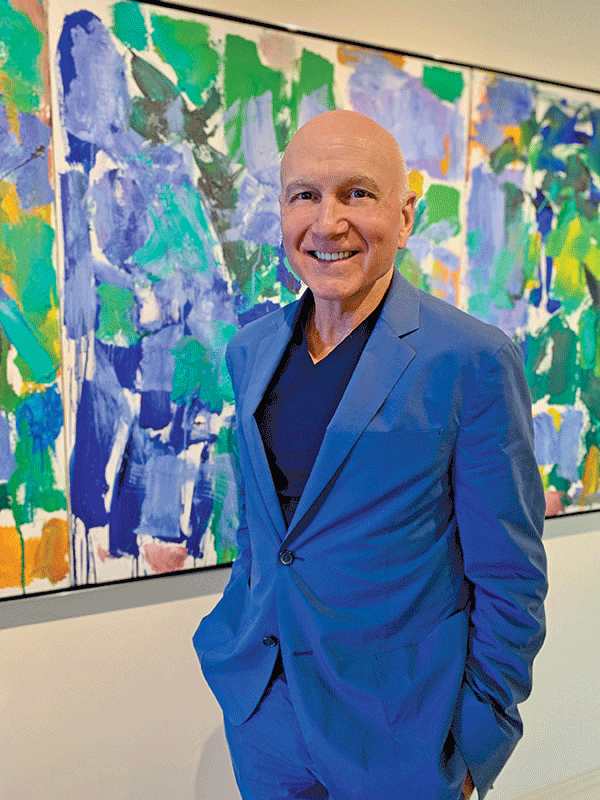
Whether it’s Lollapalooza, wine, or art Bob relies on extensive, personally conducted research to inform a sort of predictive analysis of his interests. By investing time and attention up front, he confidently lays out a plan. At Lollapalooza, his pre-grades determine which bands he will see and the route he needs to take to efficiently get there. To follow up, his summary of the event informs his music library and future concert attendance.
When I asked if he applies this approach to art buying, he takes me to a closet lined with auction catalogs, each of which is flagged with dozens of page markers to indicate where his notes are.
“When the auctions come up, especially during the big weeks, I’ll have several catalogs spread out in the kitchen.” Bob explains that, much like his pre-concert strategy, he always has an auction game plan: “I make a worksheet that will have a list of estimated values, preferences, and little notes.” Then he documents which auctions take place in the morning, afternoon and evening and at which houses (Christie’s, Sotheby’s and Phillips, for instance) so if he’s able to attend in person, he is prepared as the auctions unfold. On top of that, he plots which works of art he’s interested in. Eventually he records which pieces he purchased on the bottom of a summary sheet.
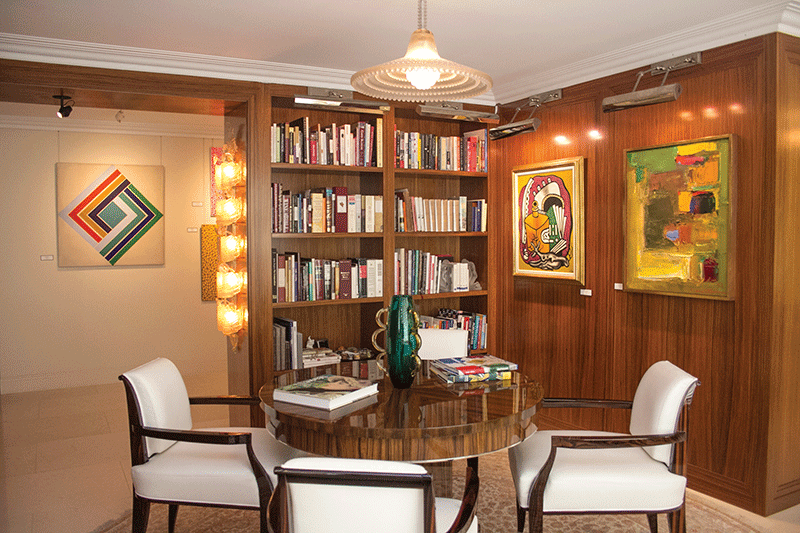
The first painting Bob ever bought at auction, in 1998, was by French artist Edouard Cortès, a Post–impressionist painter who painted European street scenes in the rain and at night. As he began to live with art, his knowledge of and appreciation for it grew.
Over the next couple of years, Bob’s interest in art continued to grow, as he acquired additional 19th Century European and American paintings. From there he embraced Post–Impressionists, like Henri Lebasque and Henri Martin, as well as Fauve and Neo Impressionist works. He acquired art by German Expressionists, like Erich Heckel, and by Cubists, such as Jean Metzinger. In each area he was drawn to color, texture and vibrant presentations
As we move more quickly through the apartment, the list of artists who are part of Bob’s collection grows more impressive and more modern. Everywhere there is color – in paintings by Kenneth Noland, and Larry Poons; on a large canvas by Helen Frankenthaler; and a vibrant Fauve by Kees van Dongen. The 1988, 12-part series entitled AIDS, by the activist Canadian trio General Idea, hangs in a row facing a brilliantly blue Lake Michigan. On another level is a print by Andy Warhol, with another Ellsworth Kelly print nearby. We stop to admire a stunning blue, geometric woodcut by Richard Diebenkorn, which Bob says his ex-wife, Tish, encouraged him to purchase in 2000 at Art Chicago, the predecessor to EXPO CHICAGO. He says while he was drawn to the blue palette, Tish saw much more in the work, which ultimately piqued Bob’s interest in more contemporary art.
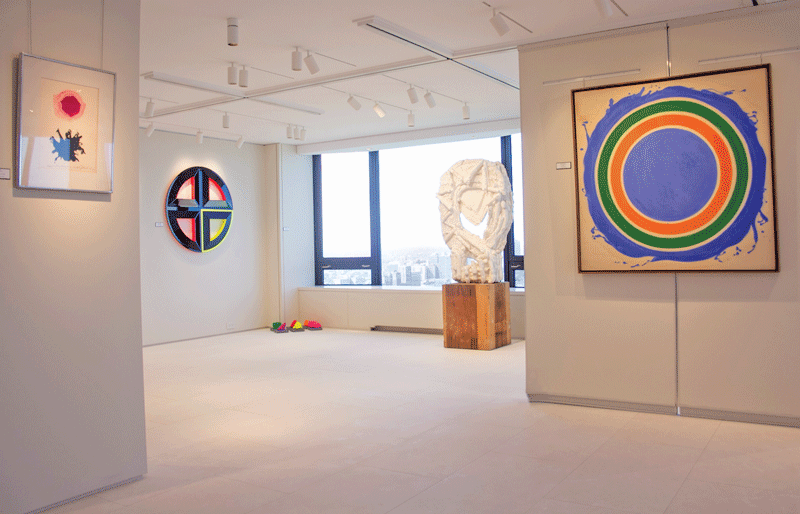
Moving upwards through the floors, we see a few more sculptures. In a room with a pool table, a series of glazed, ceramic bottles by Michael Kaysen, purchased from 65Grand Gallery on North Avenue, are placed just a couple of feet from a striking round closed pot by Toshiko Takaezu. Tucked into an alcove is a pair of red and green, port-and-starboard-like vertical rectangles by Anne Truitt.
As Bob rattles off more names of artists and galleries, he refers to professional-looking gallery labels placed next to each work, sometimes pausing to tell me a story about the art, such as the time a chunk of thick oil paint fell off of a Hans Hofmann, and it required attention from a conservator. There is so much to see and appreciate, it feels a little like dashing through a museum before closing time.
The art in Bob’s home seems imbued with life, so much so that just because something is put away or moved to another location does not mean it’s forgotten. Much like the wines in his expansive cellar, the art in Bob’s collection continues to mature. The prospect of a new phase is part of the fun. Says Bob, “To make sure you catch it all, the process involves awareness, education and motivation.”
The depth and significance of Bob’s collection today hides the fact that, as he says, the art world once passed him by, without anything more than a peripheral awareness. 30 years ago, he recalls, he used to feel as if he was an outsider among people speaking a different language.
However, once Bob purchased a few of pieces of art and lived with them, he recalls, “The door opened a little bit, I was allowed to come in. And it wasn’t so dangerous, though the learning curve was steep, and never ending.”
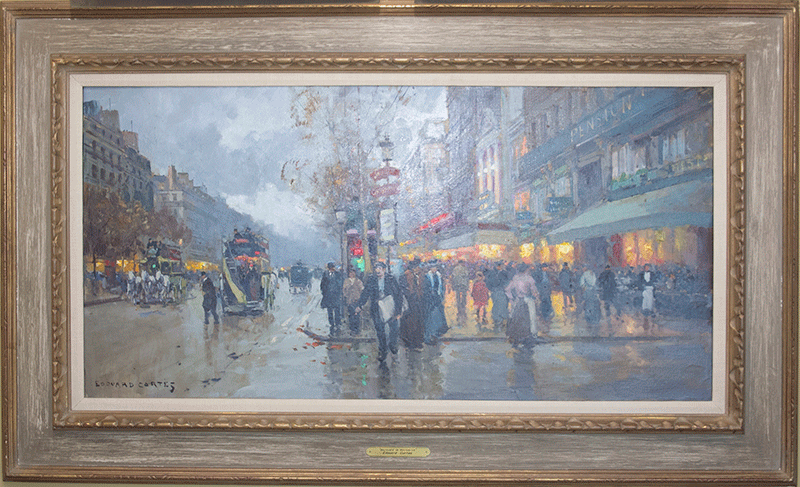
Bob’s “Art 101” was 19th century European art, but his art buying continues to span a mix of periods, artists and mediums, eluding classification as a whole. For him, “It’s just opened up more rooms. I open up the door and go, ‘Whoa, this is nice. I want to know more.’”
His curiosity piqued, he doesn’t hesitate to look for help understanding what is new for him. As Bob started to immerse himself in contemporary art, just a few years ago, he learned more and added to his collection. As new art continued to come home, he bought reference books to accompany the works and kept flagging the pages of auction catalogues. Constant communication with his friends in the art world has helped him learn holistically.
With a growing knowledge and education, his earlier focus shifted forward in history into American post-war and contemporary art. As Bob’s awareness grew, so did his confidence and his exposure to a wider range of art.
When I ask Bob how much of his collection has been acquired at auction, he says the majority. “The specialists at Sotheby’s, Christie’s, Phillips, and Leslie Hindman have all been so informative and helpful. That’s how I learned. They’ve each become as much a partner and a consultant as salesman.”
As Bob got his feet wet at auctions, he credits a few key friends, including his ex-wife Tish, Bill Gross of 65Grand Gallery, and associates at local museums, with advising him about acquiring work and helping him test drive an expanding body of knowledge.
Bob is drawn to auctions because there’s a clear market history, and, as he puts it, the option to work with the houses on the buy side as well as on the sell side, should the need arise. “If you buy auctionable wines and you decide you don’t care for a particular region of the world of wine any more – for instance, you’re done with Bordeaux – you could consign it with Hart Davis Hart [a Chicago-based wine auction and company], sell it and even receive a return on your initial investment.” Bob’s experience with wine collecting made him realize the same could be true for art.
Bob says he hasn’t reached the point where he’s outgrown a work of art and wanted to sell it. Instead, he relocates and rehangs art as needed, or whenever a new piece arrives at home. Often a newcomer alters the dynamic that familiar works create with one another. Sounding as if he’s talking about children he says, “It’s almost like they’re competing with one another for space on the wall. When art gets put in storage, you can hear whether it’s upset or not. It can’t stay there too long.”
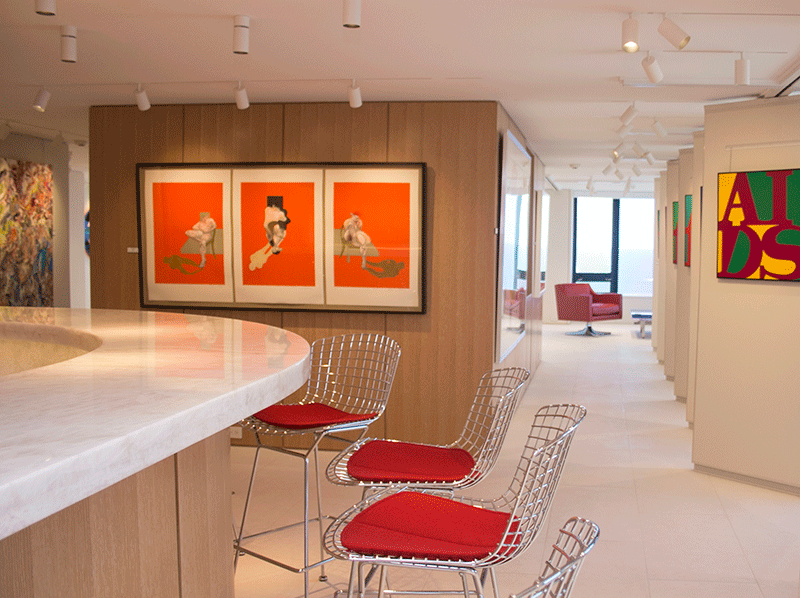
–
I started to think about Billy Beane, who scouted for and managed the Oakland Athletics baseball team in the late 90s and became the inspiration for Michael Lewis’s book Moneyball and the follow-up film. Beane avidly mined statistics to identify undervalued ball players and ended up finding value others didn’t see. To me, while Bob is clear he’s not looking to profit from art collecting, his serious study of works coming up for auction is representative that, in addition to listening to the advice of friends and art colleagues, by assembling much of a star collection on the secondary art market, not only is some risk mitigated, but there is a corresponding resale market that helps Bob find and preserve value on his own terms.
–
Living with art is also social for Bob. His love of wine, and the space and versatility of his home, means he entertains often. With nearly floor to ceiling windows, two levels even have temporary or pivoting walls that allow for flexible exhibition space as needed.
Whether it’s art, wine, food, music or travel, people from all walks of life can be connected. “All of a sudden, the door opens again, and a conversation begins. Art transcends all the professions,” says Bob. “It can fit in with people of every political persuasion, business background and age. No one’s excluded. Remember I mentioned I was afraid to walk in a room because I wouldn’t belong? It’s just the opposite, this is the most welcoming room you’ll ever get into.”






